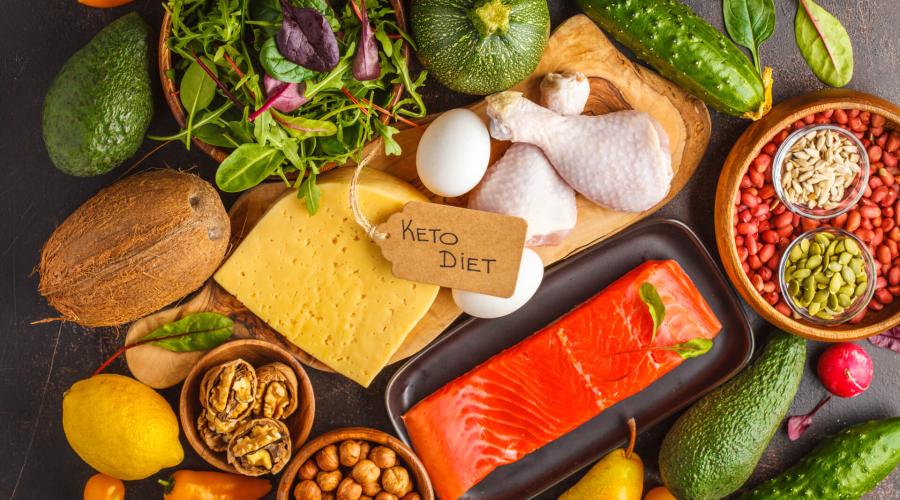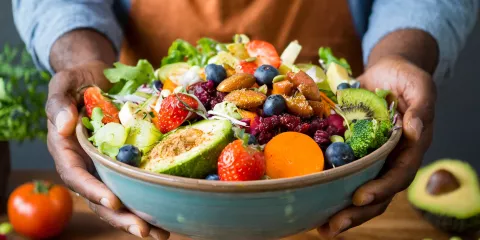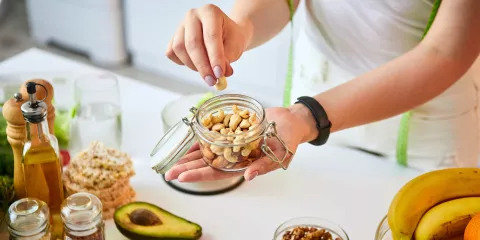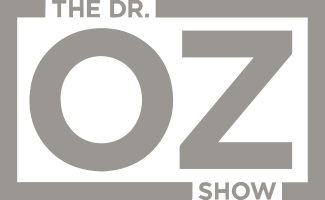
The Keto Diet (A Dietitian’s Review)
Curious about the ketogenic diet? Maybe you’ve seen diet reviews online or product ads in your social feeds. Maybe a friend or family member recently lost a lot of weight, and they swear by it.
In this post, we’ll give you an overview of the ketogenic diet. This includes what it is, how to follow it safely and additional information about difficulty and supplementation.
We hope this post will empower you to make individualized dietary decisions alongside your healthcare provider.
What Is the Keto Diet?
At face value, the ketogenic diet is a low-carb, high-fat diet (plus moderate-to-low protein).
Now, are you ready for some science?
Normally, the body uses carbohydrates for energy.1 However, the goal of a true ketogenic diet is to force the body into an alternate energy-burn state called “ketosis.”2 Ketosis occurs when the body burns fat for energy.1-3
The keto diet aims to manipulate this process by drastically restricting carbs.2 The body is then forced to get energy from other food sources, like fat.
There is great interest in the ketogenic diet due to its supposed weight loss and disease prevention benefits (more on that later).
How to Follow a Keto Diet (Safely)
Many people “follow” a keto diet, but unless they are meticulously carb counting, monitored by a dietitian and testing for ketones, they are rarely in ketosis.
To truly achieve and stay in ketosis, you must tailor your daily carbohydrate intake.3 A dietitian can work with you individually to determine your ideal keto carb limit.
How to Safely Cut Carbs
Everyone can benefit from limiting empty-calorie carb foods like sweets, chips and sugar-sweetened beverages.
However, on the keto diet, you’ll also have to limit healthy sources of carbs in order to stay in ketosis. Healthy carbs include fruit, vegetables, starches, whole grains, legumes and low fat dairy.
Currently, there are no set guidelines for how many carbs you should eat on a keto diet. However, most versions suggest less than 50 grams of carbs per day.2
For reference one banana has 23 grams of carbs.4
How to Choose the Best Proteins for Keto
To keep your carb intake low, be selective with your protein choices. The best keto proteins are those that are low in carbs and high in healthy fats, which include:
- Tuna
- Omega-3 eggs
- Grass fed beef (may have more healthy fats than conventional beef)5
- Salmon
How to Safely Increase Fats
Again, while there are no set guidelines for how much fat you need on keto, some versions suggest making 80% of your calories come from fat sources.1
Diets that are high in unhealthy fats can negatively impact your heart (learn more in the FAQ section below).2 If you’re concerned about heart health while on keto, opt for healthy fats that come from foods such as avocado, fatty fish, liquid cooking oils, nuts and seeds.
Limit your intake of foods that contain high amounts of saturated or trans fats. This includes fried foods, heavy cream, whole milk, cheese, butter, red meat and processed meats.
Keto Diet FAQs
We’ll answer some commonly asked questions about the ketogenic diet so that you can better determine if it’s right for you.
What Are the Benefits of the Ketogenic Diet?
There are a few benefits to the keto diet, more specifically:
- Aids in epilepsy management: Most of the research behind the keto diet pertains to helping those with epilepsy.1-2
- Reduces carb intake: As mentioned before, if you struggle with overindulging on sweets, chips and sugar-sweetened beverages, keto may motivate better control.
- May help with initial weight loss: Although research shows insignificant differences in long-term weight loss on keto, some research shows greater initial weight loss with keto.1,3
Is it Hard to Follow a Keto Diet?
Compared to other diets, correctly following a keto diet can be very difficult. While you may get comfortable with keto cooking and eating, staying in ketosis is the hard part.
Even one carbohydrate-rich meal can kick you out of ketosis, and you’ll have to start over with a carb restriction to get back in the game.
So, while many people follow a keto diet for long periods of time, that doesn’t mean they’re in a continual state of ketosis.
When you’re entering ketosis, you may notice flu-like symptoms from something called the “keto flu.” Some people also experience fatigue, irritability and even an upper body rash.1-2,6
While the initial keto flu may be fleeting, if you keep having to re-enter ketosis due to carb overconsumption, these symptoms may deter you from continuing with keto.2
Are There Safety Concerns with the Keto Diet?
Prior to starting a new diet, consult with your doctor and/or dietitian. Certain diets can put you at heightened risk for nutrient deficiencies, nutrient toxicities, worsening of health status and/or adverse drug-nutrient interactions.
Let’s talk about specific things to be aware of in regards to the ketogenic diet:
- Potential negative impact on heart health: Keto diets have the potential to be high in unhealthy saturated fats, which can negatively impact your cardiovascular system.2
- Potential risks in older adults and menopausal women: As we age and/or enter menopause, our risk for heart disease increases. Coupled with a high fat and high cholesterol diet can further impact that risk.2
- Potential for weight gain: Fatty foods carry lots of calories. If portion control is not practiced on the keto diet, weight can increase.
- Potential for constipation: When you cut out fibrous fruits, vegetables and grains, you’re also reducing the amount of fiber in your diet, which can lead to back-ups.1-2
- Potential risks of disordered eating: A proper keto diet may require detailed analysis, monitoring and dietary intervention to achieve ketosis and get the results you want. In certain people, this can lead to food obsession and/or eating disorders
- Potential increased risk of certain conditions and diseases: Some research shows that dietary intake similar to a keto diet may heighten your risk of kidney stones and liver disease.1-2
Do I Need to Take Supplements on a Keto Diet?
In most cases, it is best to obtain nutrients from food sources first. Supplements can be used to fill in nutritional gaps, meet specific nutrient needs and/or when one’s diet lacks certain nutrients.
Remember to consult with your doctor before starting or changing your supplement regimen. Supplements can play a part in your health status and how certain medications work.
When following a keto diet, pay attention to the following nutrients:7
- Fiber
- Selenium
- Magnesium
- Phosphorus
- B vitamins
- Vitamin C
When you’re deficient in certain nutrients, supplementation and/or dietary changes may be required. Supplementation should be discussed and analyzed by a qualified healthcare provider prior to starting.
In Summary
Even though staying in ketosis can be difficult, you may enjoy experimenting with a diet that encourages you to cut back on carbohydrates – especially empty-calorie sweets, snacks and sugary beverages.
You can also focus on eating more foods with healthy fats, which can positively impact heart health.8
However, it is important that the diet is safe for your individual health needs, which also includes mental and emotional health. The goal is to adopt a dietary pattern that helps you reach your health goals while promoting a healthy relationship with food.
References
1 Academy of Nutrition and Dietetics. The ketogenic diet: A breakdown of this popular eating plan. Food and Nutrition Website. Published November 8, 2018. Accessed December 20, 2022.
2 Gordon B. What is the ketogenic diet? Eat Right Website. Published May 15, 2019. Updated April 13, 2021. Accessed December 20, 2022.
3 Dennett C. The ketogenic diet for weight loss. Today’s Dietitian Website. Published January 2019. Accessed December 20, 2022.
4 US Department of Agriculture (USDA). Banana, ripe and slightly ripe, raw. FoodData Central Website. Accessed December 20, 2022.
5 Zeratsky K. Grass-fed beef: What are the heart-health benefits? Mayo Clinic Website. Published June 24, 2022. Accessed December 20, 2022.
6 Xiao A, Kopelman H, Shitabata P, Nami N. Ketogenic diet-induced prurigo pigmentosa (the “keto rash”): A case report and literature review. J Clin Anesthet Dermatol. 2021;12(1):S29-S32.
7 Harvard Medical School. Should you try the keto diet? Harvard Health Publishing Website. Published August 31, 2020. Accessed December 20, 2022.
8 Mayo Clinic. Dietary fat: Know which to choose. Mayo Clinic Website. Published April 8, 2021. Accessed December 20, 2022.












